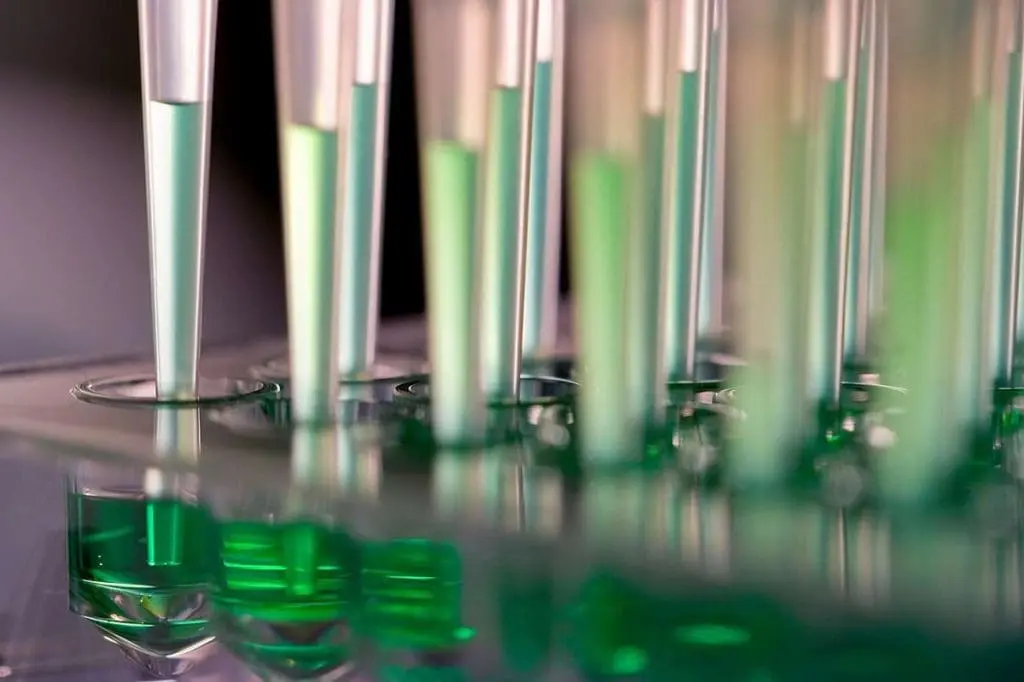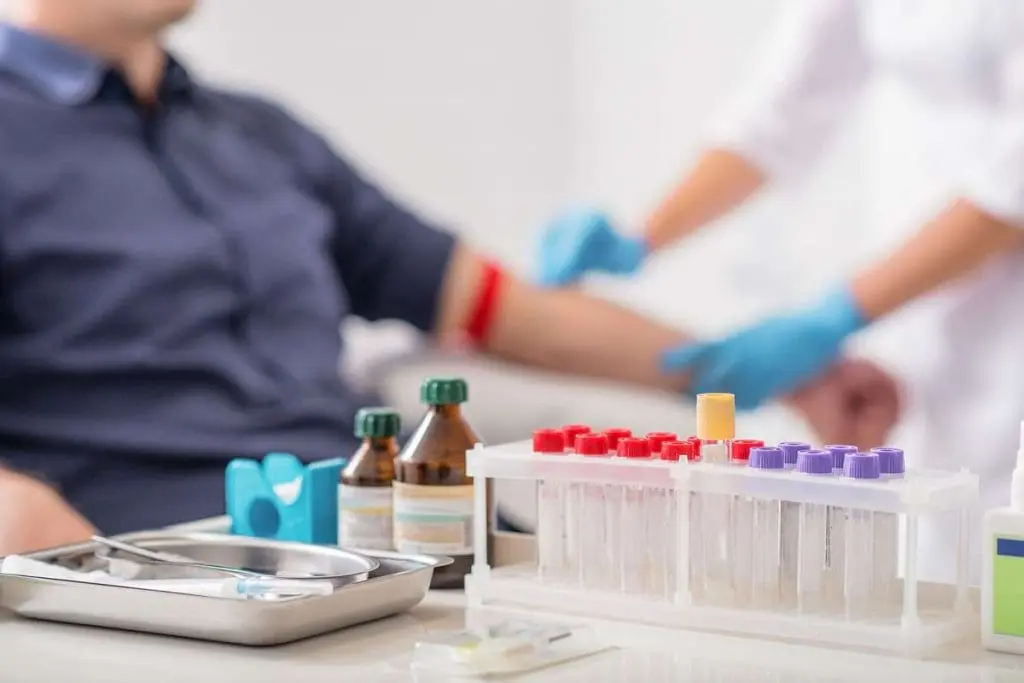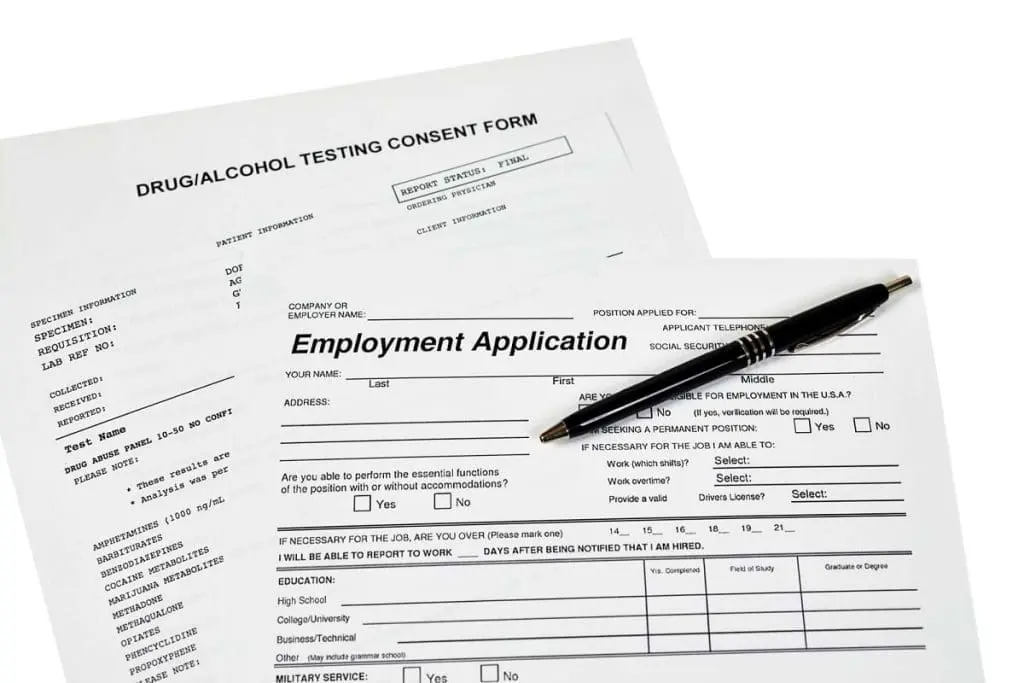To ensure the safety of their employees and workplaces, many organizations elect to perform a 4 panel drug test. Four panel drug tests are used to test employees for the use of opiates, marijuana (tetrahydrocannabinol, or THC), cocaine, and methamphetamines. They have become increasingly common in all industries, including the federal government, which must abide by the Drug-Free Workplace Act of 1988.
In this blog, we explore what a 4 panel drug test is, how it works, the components of a 4 panel drug screen, why it’s important, how it’s applied, and more.
Table of Contents
What is a 4 Panel Drug Test

Let’s look more closely at what a 4 panel drug test is and how it’s administered.
Definition and Basics
A basic 4 panel drug test involves collecting a urine sample which is then scanned for drug metabolites. The test is designed to scan employees’ use of opiates, marijuana, cocaine, and methamphetamines. Tests can also be performed to look for benzodiazepines, ecstasy, methadone, and Oxycodone.
How the 4 Panel Drug Test Works
If you’re asking, “what is a 4 panel drug test?” you’re probably also wondering how the test works. Essentially, it requires a sample collection cup and a specialized drug kit. The process itself is multi-step and includes:
- The subject is asked to urinate in the dispensable collection cup. About 30 to 50 ml of the sample is required for an accurate test.
- The sample must correspond to an optimal temperature range, typically 90 to 100 degrees Fahrenheit. The collection cup will have a temperature strip to ensure the specimen is of the appropriate temperature.
- The collection kit will include a 4 panel drug test card/medication test strip, which must be lowered into the urine sample.
- The test strip must be left in the sample for three to five minutes.
- A control line marked “C” will appear, at which point the strip can be removed and the results read and compared to the test line marked “T.”
- The test is then sent to a lab for further analysis. If the test is positive, the lab will be able to identify which drug(s) are in the subject’s system.
Components of a 4 Panel Drug Screen

A basic 4 panel drug screen looks for four primary substances: opiates, marijuana (THC), cocaine, and methamphetamine.
Opiates
Opiates are a wide-ranging group of drugs used as pain relievers. They work by attaching to opioid receptors in brain cells, thereby reducing a person’s perception of pain. They are the leading cause of drug overdose deaths in the United States, according to the Centers for Disease Control and Prevention.
The opiate family includes a number of legal medications, like fentanyl, codeine, and morphine, as well as illegal drugs such as opium. All of these can cause feelings of drowsiness, euphoria, confusion, nausea, and other side effects. They can also be highly addictive.
For these and other reasons, it’s critical that employers scan for opiate use among their workforces. A 4 panel drug test for employment is an easy effective way to discover if employees are using opiates. Within minutes, an employer can tell if there are drugs in the subject’s system. Further laboratory analysis will indicate if the subject is using opiates.
Marijuana (THC)
Although marijuana is legal in many states, employers may still want to screen their employees for its use since the drug can have divergent effects on users. Many people who smoke or ingest marijuana feel relaxed, but it can also lead to heightened levels of anxiety. Either can impact work performance.
The 4 panel drug test screens for THC, the active ingredient in cannabis. A positive or negative result will appear on the test strip within a few minutes. If positive, the strip will be sent back to a lab for further analysis to see if THC has been found in the subject’s system.
Cocaine
Cocaine is a powerful stimulant that can be inhaled, snorted, injected, or taken orally. It is considered a highly addictive drug. Although it provides increased energy, high dependency can lead to binge cycles and serious side effects, including paranoia and delusions, and damage to the heart, nose, throat, and lungs.
Detecting cocaine in an employee is critical, both for the safety of the employee and maintaining the efficacy of their work. A positive 4 panel drug screen will show results within only a few minutes. Those results can then be sent back to an external lab for further analysis, potentially confirming the existence of cocaine use.
Methamphetamine
Like cocaine, methamphetamine is a potent and addictive stimulant. It is derived from amphetamine, a drug used in nasal decongestants. It usually takes the form of a crystal-like powder that can be smoked, injected, or taken orally. Chronic use can cause significant and long-lasting effects on a person’s nervous system. It can lead to an increased risk of stroke, memory loss, paralysis, cognitive impairment, and death.
A 4 panel drug test scans for methamphetamine discharge in a person’s urine. A positive test will include traces of amphetamine and oxidized and de-animated derivatives. The test can then be sent to an external lab for further evaluation, possibly confirming the existence of methamphetamine in the employee’s body.
The Importance and Applications of a 4 Panel Drug Test

A basic 4 panel drug screen is a useful tool for determining which employees may be currently under the influence of drugs. It can also be helpful in certain legal cases and for specific medical purposes. Let’s explore each in more detail.
Employment Screening
A four-panel drug test is excellent for ensuring a drug-free workplace. Four-panel drug testing can be used by employers in many scenarios, including pre-employment screening before a person is hired and periodically throughout the employment period. The drug tests can also be helpful in determining whether a person is continuing to use drugs beyond what has been medically prescribed; for example, following an on-the-job accident or incident.
Legal Cases
Four-panel drug tests are often used in legal scenarios to determine whether the individual in question may be under the influence of drugs and if that usage impacts their ability to perform daily duties. For example, the results from a drug test may be used as evidence in probation hearings or child custody cases.
Medical Purposes
Positive results from four-panel drug tests are routinely used for medical purposes—specifically, to treat employees who may be suffering from addiction. Test results can be used to diagnose a specific drug problem; help in treatment planning and monitoring; and be used to ensure patient safety.
Interpreting the Results of a 4 Panel Drug Test
Using a 4 panel drug test to determine whether or not drugs are present in an employee’s system is quick and straightforward. Here, we’ll further explore the question “what’s a four panel drug test?” by discussing how to interpret test results and potential factors that could impact those results.
Understanding Positive and Negative Results
Reading a 4 panel drug test strip is akin to reading the results of a pregnancy or COVID-19 test. Drug test strips include two pink bands that represent the Control (or “C”) and Test (or “T”) results. After the test strip has been immersed in a urine specimen for between three and five minutes, the administrator will be able to read the test strip to see if drugs have been detected.
- If the test is positive, a single pink bar will appear in the C band
- If the test is negative, a single pink bar will appear in the T band
- If no bar appears, that also indicates a negative test
A positive test indicates that some drug has been found in the specimen, but the test will not say which drug was detected. For that, the test strip must be sent to an external laboratory for further analysis. Laboratories typically return a detailed report within a few days.
Although rare, false-positive or false-negative results can occur, as can inconclusive tests. In these cases, the tester may consider retesting the same sample or ask the employee to submit a new sample.
Factors Affecting Test Results
Like any urine test, there are several factors that could impact the results of a 4-panel drug test for employment, including:
- Time of collection: The more time that passes between the time the sample is collected to the time it’s analyzed, the more likely the test is to be compromised and the results to be incorrect.
- Hydration: The more hydrated the employee being tested is, the more likely it is their urine sample can become diluted. A diluted four-panel drug test sample reduces the amount of drug that can be detected, which may make the test inaccurate.
- Metabolism: Everyone’s metabolic system is different. Some people may have higher or more active metabolism than others. While higher or more active metabolisms cannot conceal drugs, they can affect the quantity of drugs in a person’s system. Therefore, drug tests performed on people with higher or more active metabolisms may be inaccurate or inconclusive.
You might also like: What is a HHS DOT Mirror Drug Test? A Detailed Exploration
Frequently Asked Questions About 4 Panel Drug Tests
What does a 4 panel drug test look for?
A 4 panel drug test scans for traces of cocaine, marijuana/THC, opiates, and methamphetamine.
How long does a substance stay detectable?
According to American Addiction Centers, the amount of time a drug stays in a person’s system varies depending on several factors, including dose, the person’s age, weight, sex, and physical health. For instance, cocaine typically stays in a person’s system for 2-3 days; marijuana/THC for 1-7 days; and methamphetamine for 2-3 days.
Can I get a false positive or negative from a 4 panel drug test?
Although rare, it is possible to get a false positive or negative result from a 4 panel drug test. In such cases, the test administrator should consider retesting the same sample or ask the employee to submit a new sample.
How reliable is a 4 panel drug test?
Four-panel drug tests are considered very reliable: however, they are not foolproof. False positives and negatives, though rare, do occur. Other factors that can influence the results of a drug test are the amount of time between the test and submission of results to a laboratory, as well as the subject’s metabolism and hydration level.
How much urine is needed for a 4 panel drug test?
About 30 to 50 ml of urine is needed for an accurate test.
How long does a 4 panel drug test take?
A 4 panel drug test generally takes between 10 to 15 minutes, from the time the urine sample is collected to when results are provided.
Final Thoughts on 4 Panel Drug Tests
Four-panel drug testing is a simple way to ensure a safe and productive workforce. Quick and easy, the 10 to 15-minute process involves the collection of a urine sample, which is then tested to look for traces of cocaine, marijuana/THC, methamphetamine, and opiates. Positive tests are sent to a lab for further analysis. The drug tests can be applied to many use cases, including employment screening, legal proceedings, and medical treatments. The tests are reliable, safe, and effective.
If you are interested in beginning 4 panel drug testing in your organization, look no further than the experts at Acuity International. We offer in-depth drug test screening for all organizations and industries, including companies that must comply with Department of Transportation drug screening regulations.
Contact Acuity today to learn more.
